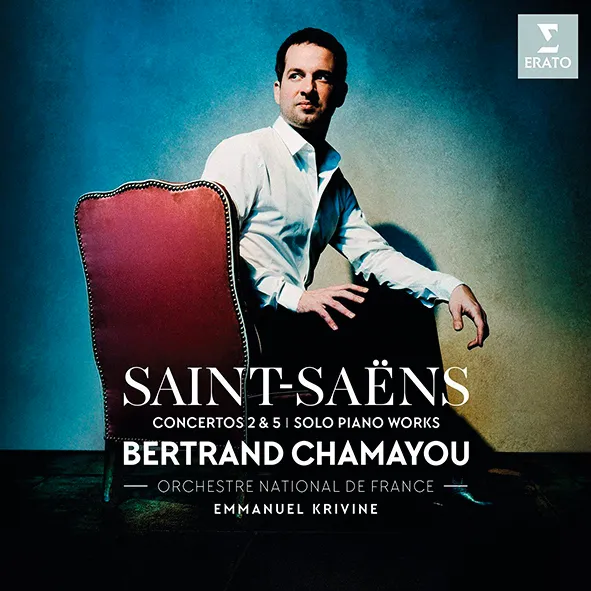
Saint-Saëns Piano Concerto No 2 in G minor; Piano Concerto No. 5 in F major; Allegro appassionato, Valse nonchalante, etc. Bertrand Chamayou (piano); Orchestre National de France/Emmanuel Krivine Erato 9029563426 77:52 mins
Saint-Saëns is still unfairly neglected for being superficial, suggests Bertrand Chamayou in his booklet note for his latest album. Look beyond the Carnival of the Animals and you’ll find that Saint-Saëns is the natural link between Liszt and Ravel. It’s an intellectual position borne out by Chamayou’s playing – fluid, thoughtful, flamboyant and precise – on this enjoyable recording of the composer’s most popular piano concertos, the Second and Fifth.
It ‘begins like Bach and ends like Offenbach’ is the comment almost always rolled out for the Second Concerto of 1868, but only because it’s spot-on. Chamayou wisely doesn’t worry about stylistic coherence, but instead emphasises the distinct characters of each of the movements. We step into an impressive Baroque cathedral of sound in the opening Andante sostenuto, but it’s the Allegro scherzando and Presto movements that really play to Chamayou’s fleet-fingered strengths. The nimbleness and fluidity of his playing is remarkable. It’s a zingy performance all round, with a vigorous performance from the Orchestre National de France, conducted by Emmanuel Krivine. The Egyptian Fifth Concerto (1896 ) also has all the right ingredients, although the performance doesn’t soar in quite the same way. But Chamayou’s serious approach is an effective foil to the score’s exoticisms – he describes it as an ‘Oriental-Hispano-Chinese mash-up’ – and prevents them from sounding too twee to contemporary ears. The recording is rounded off with a handful of solo pieces, chosen to highlight the artistic preoccupations of a composer who was born in Paris and died in Algiers. There are some beautiful gems here.
Rebecca Franks